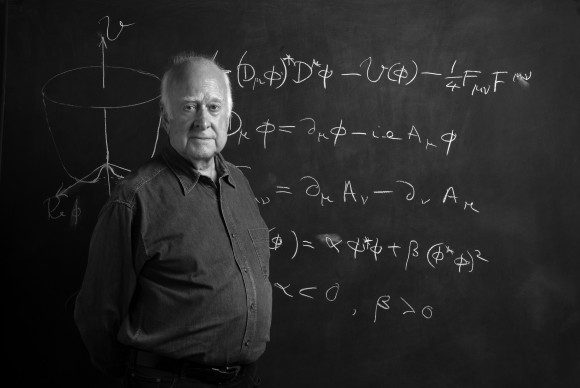Documentary film Particle Fever starts in 2008 with the building of the Large Hadron Collider (LHC) in Cern, Switzerland. The Hadron Collider is the largest machine ever built, and at a cost of $4.75 billion – the most expensive. It’s purpose? To test the 1964 theory proposed by Theoretical Physicist Peter W. Higgs on how particles acquire mass. The release date of Particle Fever coincides with Peter W. Higgs and Francois Englert receiving the Nobel Prize for the discovery of the Higgs boson, the so-called ‘God Particle’ that proves the theory.
The documentary first screened this year at the Telluride Film Festival’s intimately-sized public library. When it was featured at the New York Film Festival it sold out. Filmmaker and director Mark Levinson, who holds a doctorate in particle physics, and producer David E. Kaplan, a professor of theoretical particle physics at Johns Hopkins, set out to make a film that was about Particle Physics, but would appeal to a large audience. They didn’t want to teach, or even have to explain physics, they wanted to tell an amazing story about amazing people who were preparing an experiment that could potentially solve the mystery of life.
In a Telluride interview with Jonathan Marlow of Fandor.com, Levinson and Kaplan attempt to explain their goals.
We treated it as a dramatic film. We recorded lines, and re-recorded lines to make it more interesting. We used a scripted lecture format to get the exact lines we needed to piece the film together.
It was important to us that the physicists could be themselves. We had to record hours of hard-core scientific jargon and then modify the vocabulary for the non-scientific audience. We wanted to create suspense and excitement, and reveal the amazing people behind the experiment.
Of course we were fortunate to have Walter Murch (ApocalypseNow, The Godfather Trilogy), one of Hollywood’s top editors on board. It was Walters first venture into the challenges of editing a documentary.
The supporting character of the film, the Large Hadron Collider stands 7 stories tall and includes a 17 mile ring. Cameras were rolling when the switch was first turned on, sending accelerator beams with particles crashing head on at nearly the speed of light. Clara Moskowitz, of Scientific American, scored a ticket for the NYFF showing. Said Clara, ” I was crying when they posted the results, along with 84 year old Peter W. Higgs on screen, and other members of the audience”.
Look for Particle Fever to be an Oscar contender for Best Documentary Film next year. The film will be in theaters March 5, 2014.


